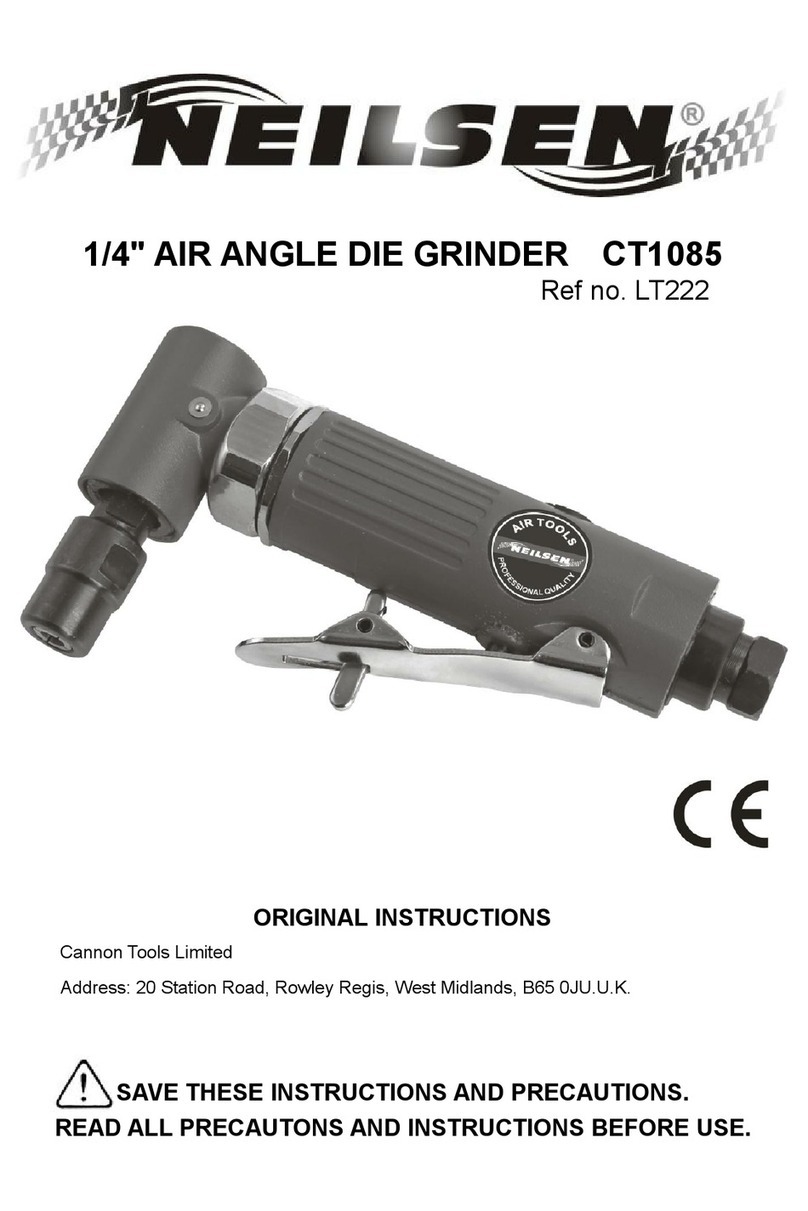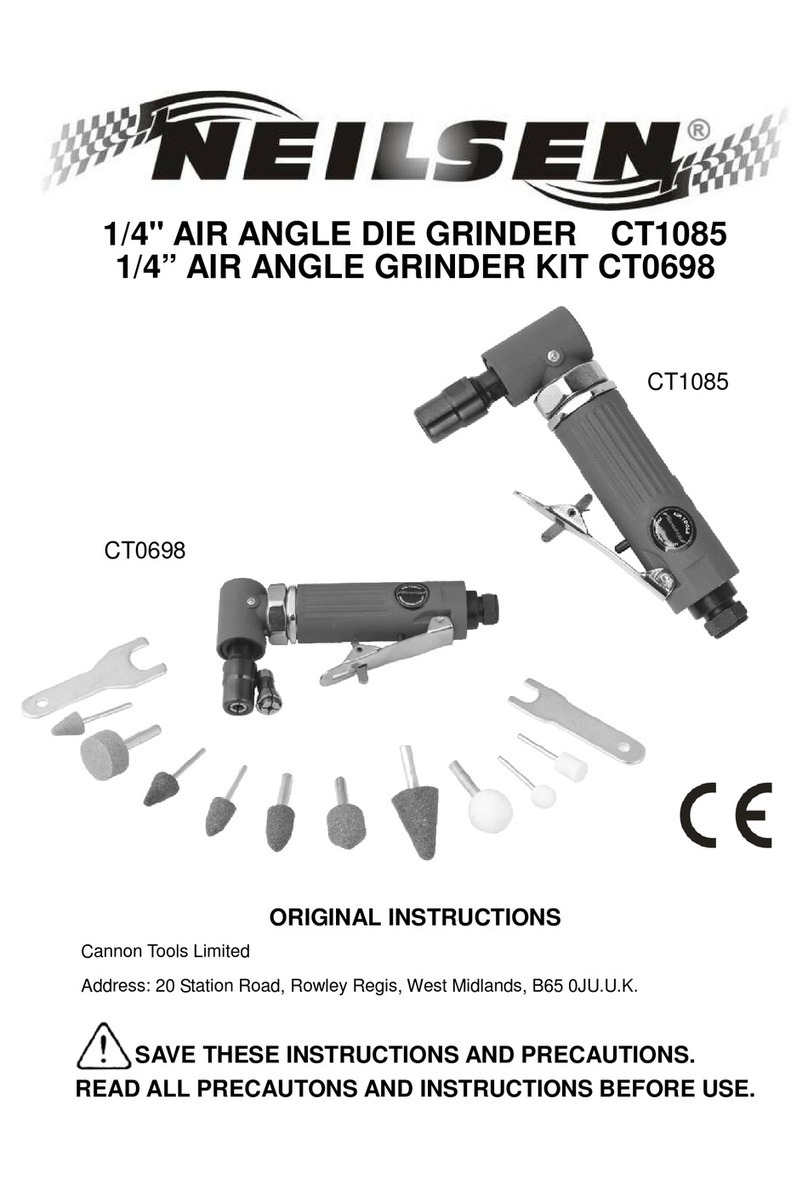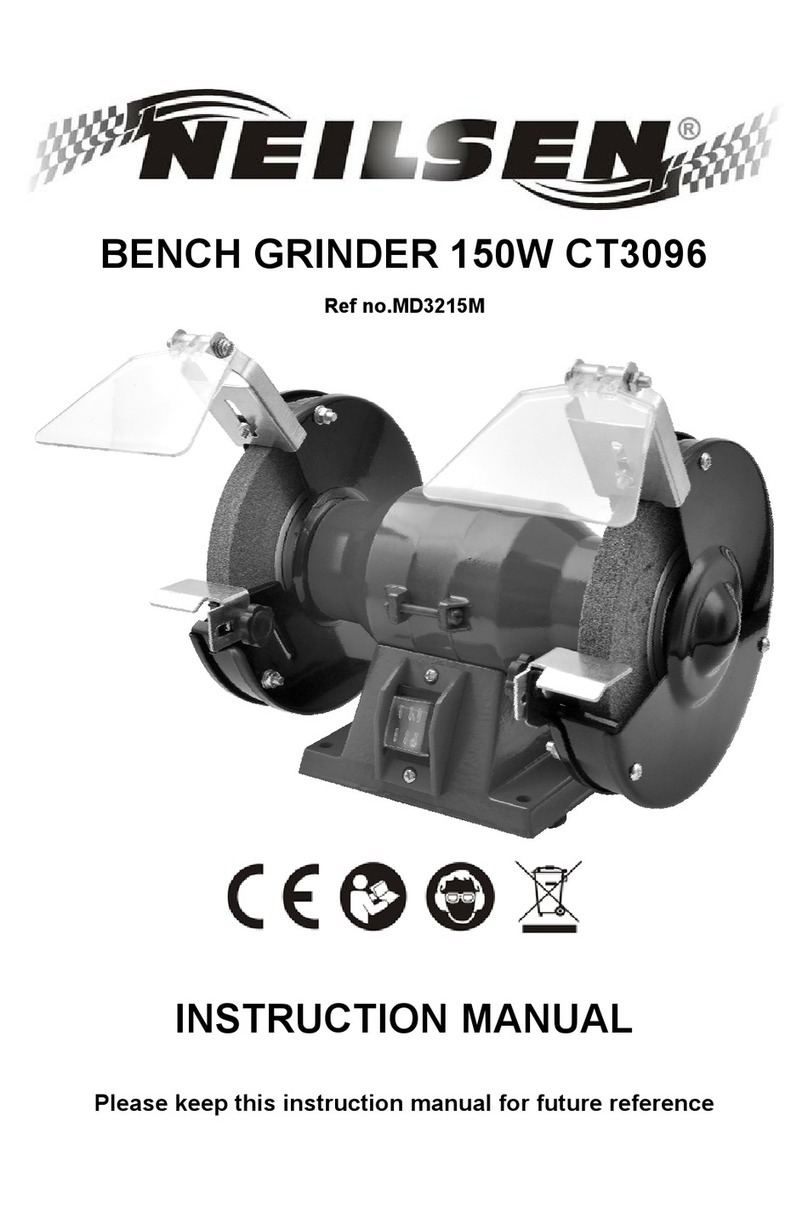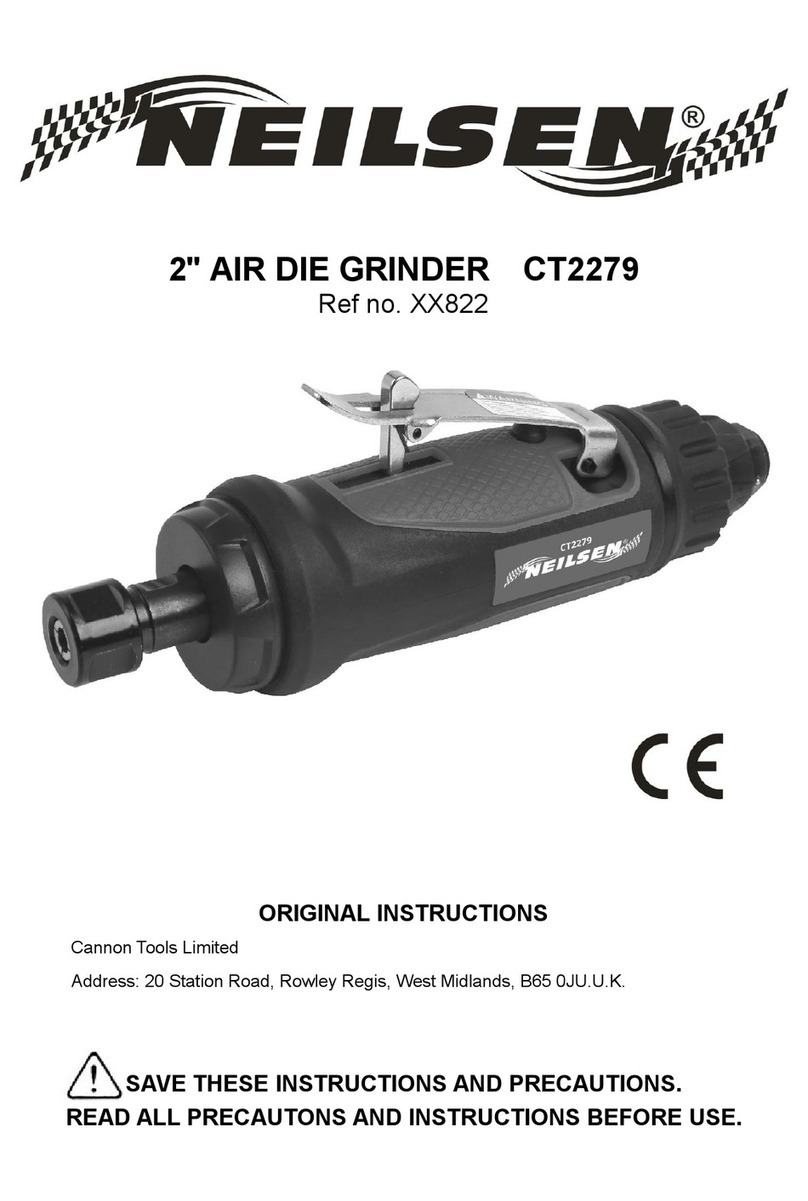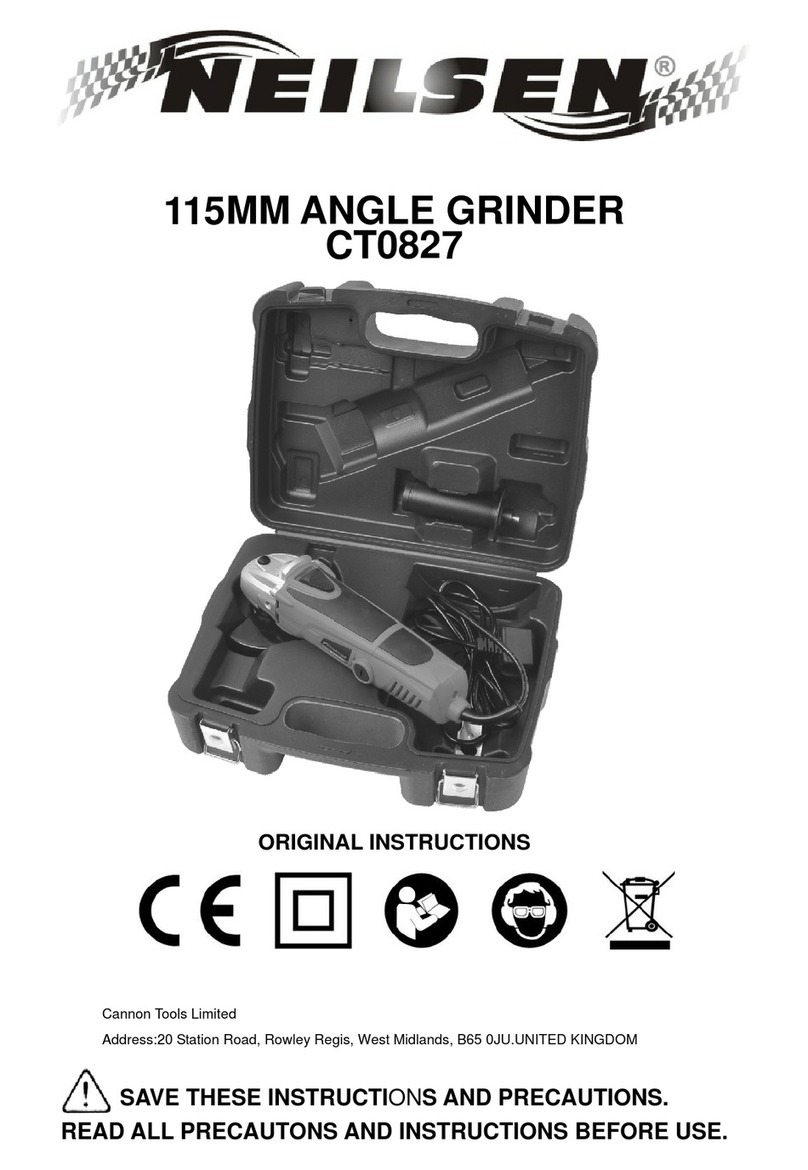
5
fitting of the Die Grinder.
5. Always disconnect the Die Grinder from its compressed air supply
source, and squeeze the Trigger to release all compressed air in the
tool before performing any maintenance or services.
6. Industrial applications must follow OSHA requirements.
7. WARNING! Some dust created by power sanding, sawing, grinding,
drilling, and other construction activities, contain chemicals known (to the
State of California) to cause cancer, birth defects or other reproductive
harm. Some examples of these chemicals are: lead from lead-based
paints, crystalline silica from bricks and cement or other masonry products,
arsenic and chromium from chemically treated lumber. Your risk from
these exposures varies, depending on how often you do this type of work.
To reduce your exposure to these chemicals: work in a well ventilated
area, and work with approved safety equipment, such as those dust
masks that are specially designed to filter out microscopic particles.
8. WARNING! The warnings, precautions, and instructions discussed in
this manual cannot cover all possible conditions and situations that may
occur. The operator must understand that common sense and caution are
factors which cannot be built into this product, but must be supplied by the
operator.
ASSEMBLY AND OPERATING INSTRUCTIONS
NOTE: For additional references to the parts listed in the following pages,
refer to the Assembly Diagram on page 9.
To Attach A Quick Connector:
1. WARNING! Prior to performing any assembly and/or adjustment
procedures, make sure the air supply hose (not included) is
disconnected from the Die Grinder.
2. Prior to use, the Die Grinder requires the attachment of a Quick
Connector into its Air Inlet. To do so, wrap approximately 3” of pipe
thread sealer tape (not included) around the male threads of a Quick
Connector. Then, firmly tighten the Quick Connector into the Air Inlet. (See
FigureA.)







